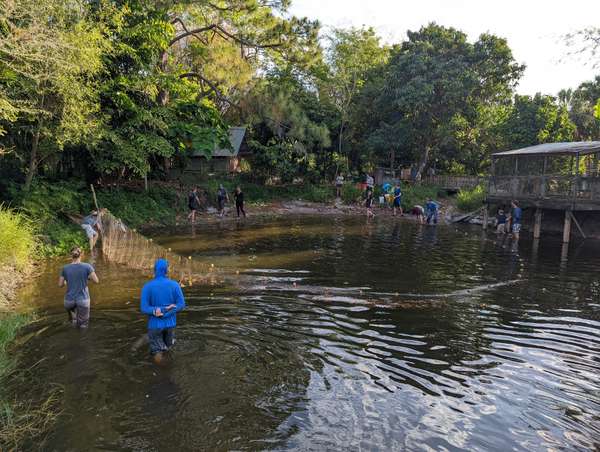Lessons We’re Learning while Seining our Ponds
已出版
2022-05-31
Last month, at the height of the dry season, we completed our annual fish harvest on the ECHO Global Demonstration Farm in Florida, USA. For years, seining our ponds has been an incredibly difficult task. With large amounts of mud and muck on the pond bottoms, our nets become filled with mud as the lead line sinks deep into this layer. Unlike previous years, however, we approached the arduous task of seining a bit differently. After coming across this resource from the University of Auburn, we decided that surely, we could improve our process.
Following the advice from the video, we installed a “mud line.” A mud line is typically made up of bunched-up netting or large non-buoyant ropes strung together and attached to the lead line. This increased surface area allows the net to sink to the pond bottom yet float on top of the mud. While we had some pieces of old seine nets to use, we didn’t have enough, so we improvised with burlap sacks. Once the sacks were saturated with water, they sank without a problem. While the burlap worked, we think the better option is using non-buoyant nets as they conform better to the bottom of the pond.
This improvement made for an entirely different seining experience. The net could be easily pulled with two people at each side, and when we reached the end of the pond, the net was no longer filled with mud and muck. We may not have netted every large fish, as some may have been able to find gaps between the burlap sack and the bottom of the pond, but our final numbers yielded similar results from previous years. This improvement was successful enough that we hope to collect enough netting to swap out the burlap sacks and continue using this technique in the future.